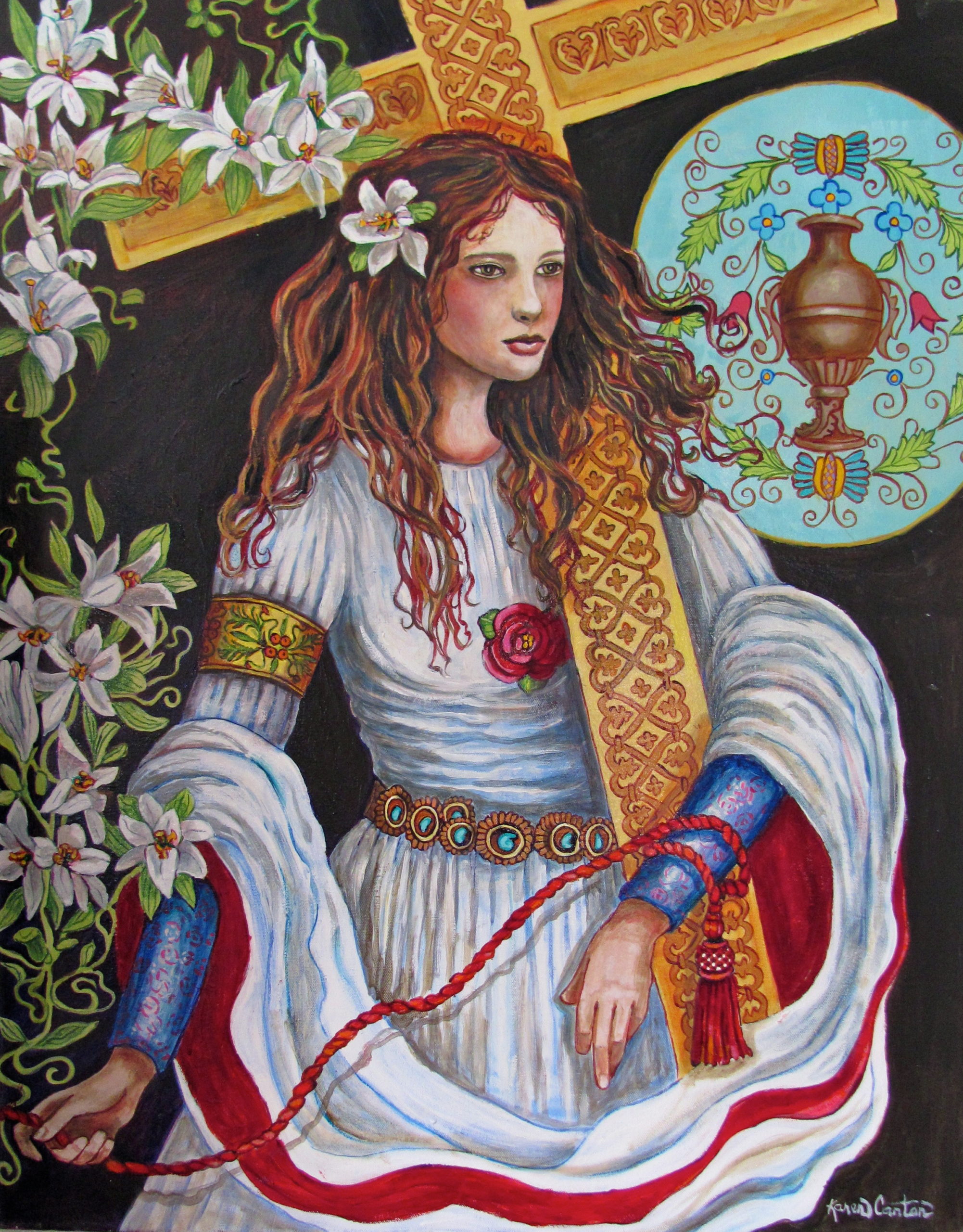Mary Magdalene: Peering into the darkness

Peering into the darkness. Talking about it. It’s what women do. And at this time in history, when women are looking squarely into the darkness of sexual misconduct, rape, and gun violence, we in the religious life delve deep into the story of women who peered into the darkness, found their souls transformed, and changed history.
Mary, the mother of Jesus, saw her son brutalized, tortured and killed, yet kept her faith. Mary of Bethany knew that Jesus would soon be killed, but managed to anoint him and give him strength to walk to the cross. And grief-stricken Mary Magdalene stumbled her way to the tomb, hoping to give some final grace to the torn body of her most cherished friend.
In John’s Gospel, the fullest account of that Easter morning, Mary Magdalene goes with her women friends to the tomb. They find the stone rolled away. Stooping down, she peers into the darkness, enters it, finds Jesus’ body missing, and runs to tell Peter. He and John, Jesus’ closest disciples, run to the tomb, find it empty, and go home, dejected. Weeping, Mary Magdalene stays. Apparently alone at that point, she is the first person to see the resurrected Jesus. “I have seen the Lord!” she reports. “I have seen the Lord!”
In a question central to the Christian faith, but rarely asked: What would have happened if she had given up? Cried and gone home? Who would have been there to meet Jesus, to tell the story of resurrection and love?
Like Eve, the first woman in the Bible, Mary Magdalene was a game changer. And also like Eve, she has faced significant degradation through centuries. Mary Magdalene is often described as a prostitute, although there is no biblical reference to that common portrayal. Rather, she was healed by Jesus of “seven demons.” In biblical terms, such demon possession indicated a physical or emotional disability, probably both. She could have been schizophrenic. She could have had leprosy or epilepsy. At the least, she probably suffered from depression and anxiety.
Jesus was the healer and friend that did not let her down. And after having been healed, she became a leader among the women who followed him. One senses deep authenticity about her, a sturdy presence. No wonder it was Mary Magdalene that stayed at the tomb when the others had melted into the background; she would do what needed to be done. Having lived through darkness herself, she had the courage to show up, to stand in silence, to weep—and then to share what she had seen, calling others to participate as well. Like the women who call for societal change today, she appealed in every instance to the powers that be: and back then, it was the male disciples.
The women who surrounded Jesus in both life and death had the courage and resilience to confront the hard realities of a world who executed their leader. Our world only gets better when we do not run away from hard truths—and that is an integral part of the Easter message for this and every year. Cute bunnies and chocolate Easter eggs are only symbols, never the point. Like Mary Magdalene, transformation comes by looking into the darkness and finding—or more accurately—being found by the light.
___________
The Rev. Lindsay Hardin Freeman is an Episcopal priest and a writer, specializing in matters of faith and women of the Bible. The author of Bible Women: All Their Words and Why They Matter, she serves St. Nicholas Episcopal Church in Richfield.
Artwork: Karen N. Canton from The Scarlet Cord: Conversations with God’s Chosen Women

